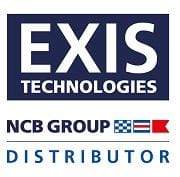
First, a bit of background on container standards
Containers are manufactured by contract between the container owner and a container manufacturer. That contract will specify a certain manufacturing standard to which the containers will be built. At the minimum, this will be the internationally recognized ISO and CSC standards for structure and marking of freight containers. The container owner may specify requirements above and beyond that minimum.
Once the manufacturer produces a lot of containers, the container owner will have a classification society examine a sample of the manufactured lot and certify that the sample meets the contracted requirements. This certification will come with an approval number, which must be displayed on each container.
The International Convention for Safe Containers (CSC) requires all containers to have a “safety approval plate” (more commonly referred to as a “CSC plate”) with the following information engraved:
- Country of approval and approval number
- Date of manufacture
- Manufacturer's identification number
- Maximum operating gross weight
- Allowable stacking weight
- Transverse racking test load value
Initial and ongoing examination
While routine examinations take place during the course of normal transport operations, these are not the same as the thorough examinations mandated by CSC—and by the US Coast Guard’s implementation of CSC in 49 CFR Parts 450-452. CSC specifies that only qualified personnel can perform thorough examinations, applying owner-established or industry-accepted pass/fail criteria to detect and correct any safety related deficiency or damage.
New containers need not have a thorough examination for the first five years following manufacture. After the first five years, containers must be examined at least once every 30 months. The container owner may choose to accomplish this by implementing either a periodic examination program (which is the default) or an approved continuous examination program (ACEP).
Examination criteria
The criteria most often used in a thorough examination to determine if a container requires repair are the International Institute of Container Lessors’ Guide for Container Equipment Inspection, 5th edition (referred to as "IICL-5"), and IMO’s Revised Recommendations on Harmonized Interpretation and Implementation of the International Convention for Safe Containers, 1972, as amended (referred to as “CSC.1/Circ.138” or just “Circ.138”).
Circ.138 explains the criteria that CSC has established that would cause containers to be taken out of service. If any deficiency or damage to the container fails to meet those criteria, the container must be taken out of service and repaired.
Whereas CSC is law, IICL-5 is a compilation of industry-accepted criteria. Container manufacturing contracts and lease agreements often will incorporate IICL-5 criteria (or other industry standards such as the Uniform Inspection Criteria or Shipowners' Inspection Criteria) as the standard to which a container must be manufactured and maintained. For that reason, thorough examinations which reveal deficiencies or damage that fail the criteria will be taken out of service and repaired—even if those containers would remain in service under the Circ.138 criteria.
Why is an ACEP better?
1) More consistent examinations
Under a periodic examination program, there is no requirement for an established examination procedure. An ACEP by nature establishes the examination procedure to be carried out by each qualified inspector, and so ensures consistency among examinations.
2) Better condition of containers in service
Periodic examinations are triggered by a schedule, so minor damage will accrue to the container during the 30 months between examinations. An ACEP will specify criteria to trigger examinations that typically occur more often than every 30 months. This means that deficiencies or damage that fail the IICL-5 criteria will be repaired sooner and not accrue over 30 months, so containers in service are kept in better condition.
3) No need to update CSC plates
Following every examination under a periodic program, the CSC plate must be marked with the date by which the next examination is required. This introduces the possibility that a container owner may fail to update the CSC plate following an examination. Under an ACEP, the ACEP number—which does not change—replaces the date of next examination. Therefore, the CSC plate would not need to be updated following an examination and always remains correct. Additionally, an ACEP does away with the need for labor to apply an update to the CSC plate.
4) Reduced exposure to CSC violations
Should a container owner fail to update the CSC plate following a periodic examination, the incorrect plate represents a violation of the CSC. This can attract a penalty from the US Coast Guard (or other similar national authority) if it is discovered. Since the CSC plate under an ACEP removes the possibility of such an omission, a container owner will not be exposed to such penalties.
Get an ACEP
If you own—or lease—a fleet of containers, you should have an ACEP to eliminate the need to update CSC plates following each inspection, reduce exposure to CSC violations, and provide more consistency for examinations that improve the quality of containers in service.
American Nautical Services has been assisting clients in implementing ACEP’s since 1990. Contact us to find out how you can get one too.








